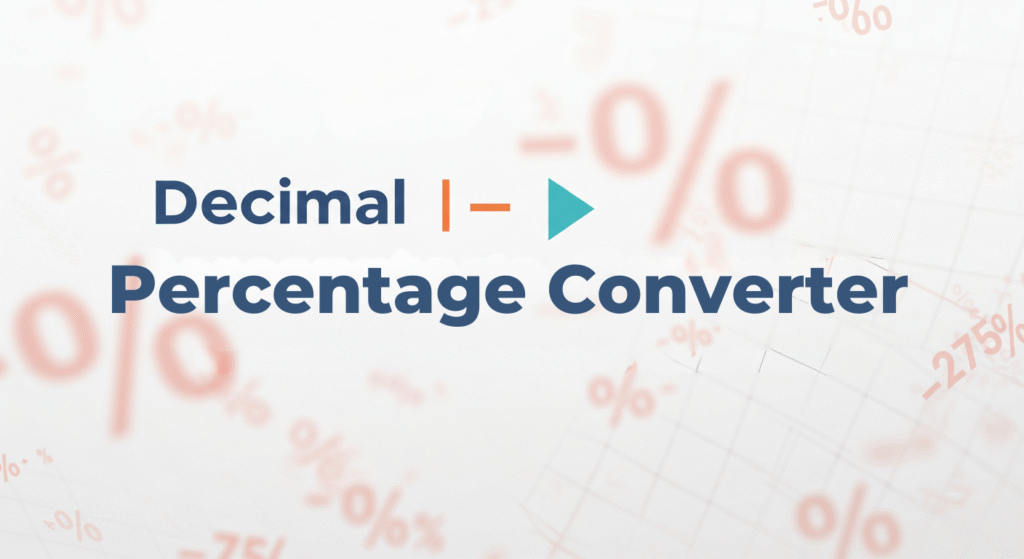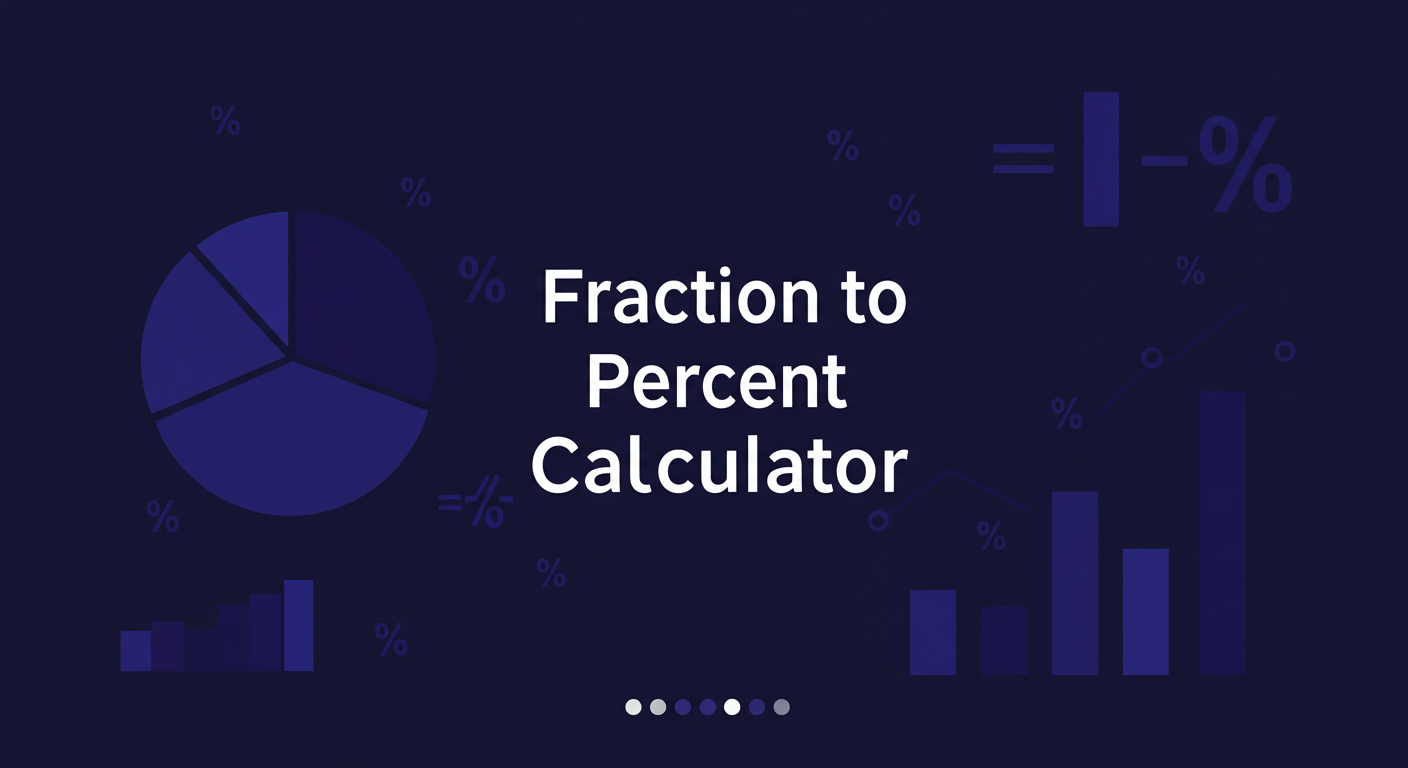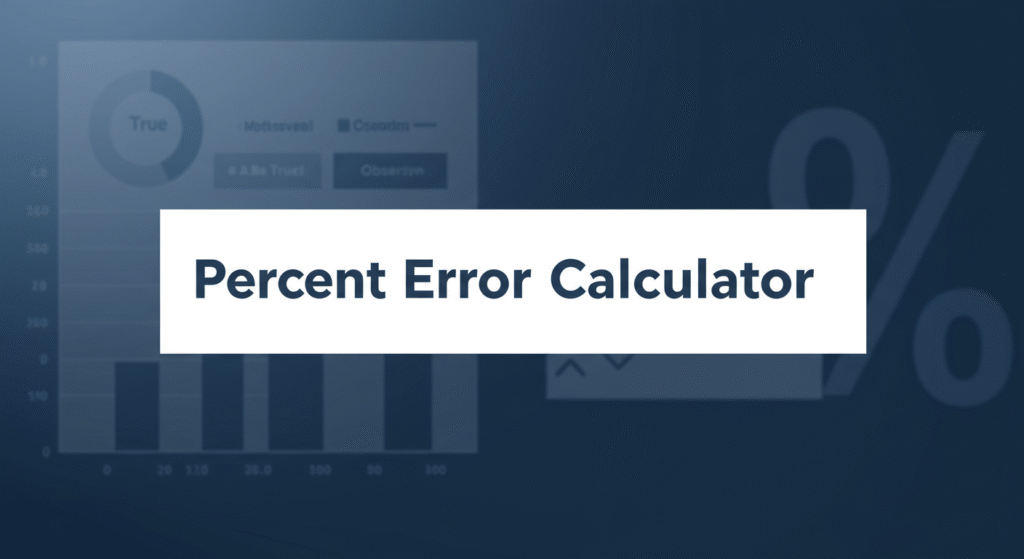Percentage of a Percentage Calculator
Percentage of a Percentage Calculator
Cumulative Percentage
Percentage of a Value
Percentage of a Percentage: Complete Guide
What Is a Percentage of a Percentage?
Working with percentages is straightforward when calculating a single percentage of a number. But what happens when you need to apply two percentages in sequence? This is where understanding “percentage of a percentage” becomes essential.
A percentage of a percentage occurs when you need to apply one percentage to another percentage. For example, finding 30% of 80%, or determining how much 25% of 60% equals.
The Percentage of a Percentage Calculator helps you:
- Calculate one percentage of another percentage
- Find the cumulative percentage when applying two percentages
- Apply these percentages to a specific number to see the final result
How to Calculate a Percentage of a Percentage
The formula for calculating a percentage of a percentage is:
Cumulative Percentage = (First % × Second %) × 100
This works by:
- Converting both percentages to decimal form (dividing each by 100)
- Multiplying these decimal values together
- Converting the result back to a percentage (multiplying by 100)
Step-by-Step Example: What is 40% of 90%?
- Convert 40% to a decimal: 40% ÷ 100 = 0.4
- Convert 90% to a decimal: 90% ÷ 100 = 0.9
- Multiply these decimals: 0.4 × 0.9 = 0.36
- Convert back to a percentage: 0.36 × 100 = 36%
Therefore, 40% of 90% equals 36%.
Applying to a Real Number
When you need to apply these percentages to an actual value, follow these steps:
- Apply the first percentage to your original number
- Apply the second percentage to the result from step 1
Example with a Real Number
Let’s say you want to find 40% of 90% of 200:
- Calculate 40% of 200: 200 × 0.4 = 80
- Calculate 90% of 80: 80 × 0.9 = 72
The final result is 72, which is 36% of the original 200.
This matches our earlier calculation of 40% of 90% = 36%.
Real-World Applications
Understanding percentage of a percentage has many practical uses:
Sales and Discounts
When a store offers multiple discounts, they’re often applied sequentially:
- A jacket costs $100
- It’s on sale for 30% off
- You have an additional 15% off coupon
To find the final price:
- First discount: $100 × 0.7 = $70 (after 30% off)
- Second discount: $70 × 0.85 = $59.50 (after additional 15% off)
The combined discount is 40.5% (not 45%), because 70% of 85% = 59.5%.
Tax Calculations
When dealing with partial taxable income:
- Your income is $50,000
- 70% of it is taxable
- The tax rate is 25%
To calculate the tax:
- Taxable portion: $50,000 × 0.7 = $35,000
- Tax amount: $35,000 × 0.25 = $8,750
This represents 17.5% of your total income (70% × 25% = 17.5%).
Investment Growth
When tracking investment growth over multiple periods:
- You invest $10,000
- It grows 8% in year 1
- It grows 12% in year 2
To calculate the final value:
- After year 1: $10,000 × 1.08 = $10,800
- After year 2: $10,800 × 1.12 = $12,096
This represents a total growth of 20.96% (not simply 8% + 12% = 20%).
Common Mistakes to Avoid
Adding Percentages Instead of Multiplying
The most common mistake is adding percentages rather than multiplying them. For example, thinking 30% of 80% equals 110% (30% + 80%) instead of 24% (30% × 80%).
Forgetting to Convert Back to Percentages
When calculating manually, people often forget to multiply the decimal result by 100 to convert back to a percentage.
Applying Percentages in the Wrong Order
Sometimes the order matters. For instance, when calculating discounts, applying a 30% discount followed by a 20% discount gives a different result than applying a 20% discount followed by a 30% discount.
Quick Reference Table
| First % | Second % | Cumulative % |
|---|---|---|
| 10% | 50% | 5% |
| 20% | 25% | 5% |
| 25% | 40% | 10% |
| 50% | 50% | 25% |
| 75% | 80% | 60% |
| 100% | 100% | 100% |
Special Cases
When Percentages Exceed 100%
Percentages can exceed 100%, representing growth or increase. For example:
- 150% of 80% = 120%
- 200% of 50% = 100%
Negative Percentages
Negative percentages represent decreases or reductions:
- -25% of 80% = -20%
- 30% of -50% = -15%
Using the Percentage of a Percentage Calculator
Our calculator makes these calculations simple:
- Enter the first percentage
- Enter the second percentage
- View the cumulative percentage
- Optionally, enter an original value to see the effect of both percentages
Practical Examples
Example 1: Budget Planning
You’ve budgeted $1,200 for monthly living expenses. You want to allocate 35% for housing, and then 40% of that housing budget for utilities.
- Housing budget: $1,200 × 0.35 = $420
- Utilities budget: $420 × 0.4 = $168
This means you’re allocating 14% of your total budget to utilities (35% × 40% = 14%).
Example 2: Project Completion
Your team has completed 75% of a project. Of the remaining work, you estimate you can finish 80% next week.
- Remaining work: 100% – 75% = 25%
- Work to be completed next week: 25% × 0.8 = 20%
- Total completion after next week: 75% + 20% = 95%
Example 3: Test Scores
You scored 80% on a test worth 25% of your final grade. What contribution does this make to your final grade?
- Contribution to final grade: 25% × 80% = 20%
This means you’ve earned 20% out of the possible 25% for your final grade.
Formula Variations
Finding the Original Value
If you know the final value after applying two percentages, you can find the original value:
Original Value = Final Value ÷ (First % × Second % ÷ 10,000)
Example:
- Final value is $36
- First percentage is 30%
- Second percentage is 40%
Original value = $36 ÷ (30% × 40% ÷ 10,000) = $36 ÷ 0.12 = $300
Finding Required Percentage
If you know the original value, final value, and one percentage, you can find the other:
Second % = (Final Value ÷ (Original Value × First % ÷ 100)) × 100
Example:
- Original value is $200
- Final value is $30
- First percentage is 50%
Second % = ($30 ÷ ($200 × 50% ÷ 100)) × 100 = ($30 ÷ $100) × 100 = 30%
Summary
Understanding percentage of a percentage helps you:
- Calculate compound discounts accurately
- Plan budgets with nested allocations
- Understand tax implications
- Track investment growth
- Analyze partial contributions to totals
The key is remembering that percentages multiply rather than add when applied sequentially. By converting to decimals, multiplying, and converting back to percentages, you’ll get accurate results every time.
Next time you encounter multiple percentages in sequence, you’ll know exactly how to handle them with confidence.





